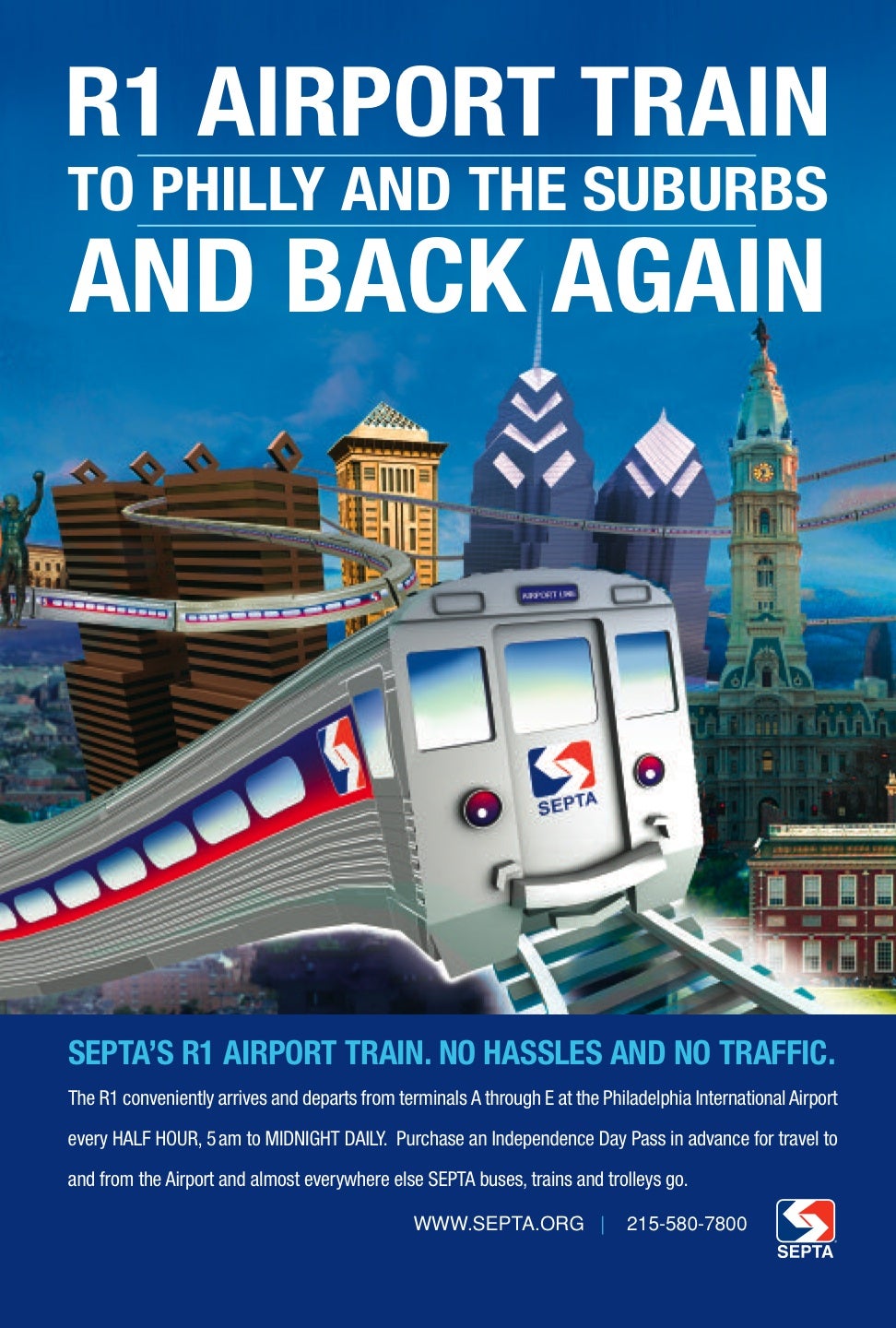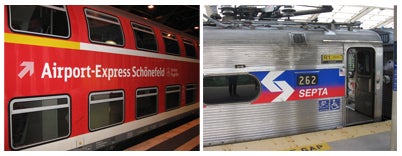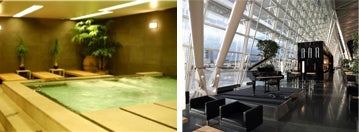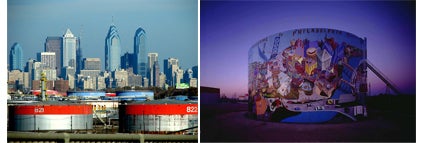Putting PHL’s best face forward
Part 2 of a series
A closer look at the infrastructure of Philadelphia International Airport (PHL) earlier this month highlighted the value of continued and thoughtful planning to help cut flight delays and improve overall passenger experience there. This week we take a look at some leading airports around the globe and their connections to the cities and regions they serve to try to draw some important parallels for leveraging one of the Delaware Valley’s most valuable assets.
PHL is the region’s international gateway to the world. More than 30 million people passed through its gates in 2008 taking either a first or last look at what the Philly region has to offer. In 2001, an article in the Wall Street Journal painted a rosy picture: the travel section ranked PHL among the most pleasurable airports to pass time in. Jesse Drucker, the author of the report, tallied a good food selection, excellent shopping opportunities and the presence of rocking chairs in waiting areas among the highlights.
Although in a slump due to the economic downturn, domestic and international air traffic has greatly increased during the last decade and is not showing trends of slowing over the long run: PHL passenger volume is expected to double by 2025.
As the world’s population continues to grow and the mobile class continues to travel, cities and regions are putting their best “faces” forward by investing heavily in their airports. Here are some best practice examples that Philadelphia can reference as it tries to create a better user experience for air travelers.
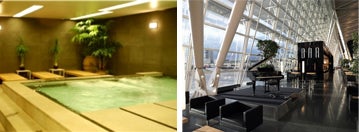
A Day at the Spa? Or the Airport? How ‘bout both?
In April of this year the Airport’s Council International released its list of top performing airports around the globe. Asia took top honors, as it typically has done in the recent past, claiming four of the top five slots with Incheon in South Korea taking the number one position in airport service quality for the fourth consecutive year.
What is it that makes an airport so great? Among other amenities, Incheon offers public WiFi, free hot showers and a day spa for folks who want to release tension during a long layover or after a trans-Pacific flight. These services though are all a product of the Incheon International Airport Corporation’s self definition as a dedicated service organization.
That entity recognizes the air travel industry as both a transportation and hospitality industry. The South Korean firm has renovated and improved its terminal three times since its 2001 opening: upgrading and updating facilities and adding new lounges with cutting edge amenities, thus following a model more similar to hotel operations than airport management.
The next expansion however is aiming to take it to another level. Planned for completion in 2020, Incheon’s AirCity will include a convention center, amusement park, yachting marina, and a state of the art out-patient medical facility catering to the boom in medical tourism. The aim is to expand the current facilities, which handle roughly 30 million passengers each year, to a level that would serve 100 million when fully operational.
For many airports, this “Airtropolis” model has been very successful. New sprawling airport complexes with abundant accessory uses are being developed around the globe: for instance, check out Dubai, Seoul or Frankfurt. These complexes include office space, conference and convention centers, retail as well as the traditional complements of parking, hotels and logistics centers.
Most of these airports are being built on new land, on the outskirts of cities or have the flexibility to expand into neighboring vacant acres. All this while planners at Philadelphia International have been dealing with space constraint for decades. Interstate 95, the Delaware River, and the Heinz National Wildlife Refuge all represent immovable barriers to expansion. And with increased federal standards for security and safety, the plan for a Philadelphia International Airport Yacht Club on the Delaware isn’t likely to materialize this decade.
What’s my motivation?
Laurie Actman currently serves as Mayor Michael Nutter’s liaison to the Metropolitan Caucus but worked on PHL issues at Select Greater Philadelphia for five years prior to her current appointment. Select works to promote and bolster the Philadelphia Metropolitan Area’s assets, such as the airport, as a valuable way to foster investment and business in the region. Actman believes that while the Airtropolis model is viable for development in PHL’s eventual plan to expand, the airport’s strongest asset is its proximity to employment, population and culture centers in Center City and its peripheral neighborhoods and suburbs.
The nearly 32 million travelers who pass through Philadelphia via PHL each year represent an extraordinary opportunity for the city and the region to leave a positive lasting impression that could result in both future tourism and long-term economic activity.
Actman heard countless ideas during her work at Select Greater Philadelphia, ranging from dynamic ad campaigns to bringing the best of Center City to the airport: Philadelphia inspired murals on terminal walls, kiosk- or mini-museums teasing the treasures in the Barnes Foundation or the Art Museum. And there was the historical lure of the Constitution Center: “exposing travelers to the best that Philadelphia has to offer in a condensed form and timeframe.” While these ideas could certainly spark potential tourist interests, Philly’s many other attractions and cultural amenities could serve as long-term economic generators for the City of Brotherly Love.
Actman sees real promise in bolstering and possibly expanding the existing connections the airport enjoys to employment centers like University City, Center City, Temple and the developing Navy Yard.
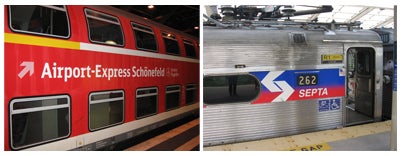
The roads most traveled
Cities around the globe have seen success by removing as many potential access barriers to and from their airports as possible. Some opportunities certainly exist for Philadelphia International to function as a more accessible gateway for the region.
About 93 percent of air passengers commute to PHL by car (an opportunity if approached smartly with out-of-the-box thinking). Driving I-76 to or from the airport provides an up-close look into Philadelphia’s robust industrial past. Unfortunately the remnants that occupy the sites on this route have been past their prime for nearly four decades and can provide an aesthetic downer. Sites such as the vast Sonoco refinery in South Philadelphia make for less than ideal views and emit formidable odors for those crossing the Penrose Bridge: not the impression Philadelphia should be trying to make in this new age of efficiency and green ideals.
The Pennsylvania Horticultural Society has taken some steps to improve landscaping along the corridor, and the mural on the Sonoco tank on the corner of Penrose and South 26th Street is a step in the right direction. But further intervention is certainly needed. Screening may be in order along the edge of the Sonoco site or perhaps airport traffic could be guided along I-95 rather than I-76, an option the Republican National Convention recommended to its visitors in 2000.
The socially and environmentally responsible answer however lies in bolstering the transit connections from PHL to the region it serves .
While Philadelphians have it pretty good in terms of commuting times with the airport located just seven miles from downtown and a one stop connection from a major national rail hub at 30th Street Station directly to their terminal of departure, a look at international best practices reveals some opportunities.
Andrew Sharp, Director General of the International Air Rail Organization based in London, applauds SEPTA for their signage as passenger’s exit PHL and says “the location of the boarding platforms between the terminal and parking garage is excellent.” He and his organization offer some precedent setting examples that may help to improve PHL’s utility as a gateway and pull some additional economic activity into the city.
Presence makes a difference
Airport rail lines must be presented as a viable automobile alternative in order to be successful and many factors play into user’s decisions including convenience, comfort, time and cost. Before these factors can even be considered, though, travelers have to know that the transit option exists.
Within the regional rail network, SEPTA runs a series of lively advertisements for the R1 Airport line, targeting those folks who use the train to commute to work and may want to commute to the airport. The R1 line which runs from the airport to Glenside, carries about 7,000 passengers every month. According to Alex Flemming, senior long range planner at SEPTA, that puts the line in the lower half of the 13 regional rail lines in terms of ridership. Unfortunately, there is a smaller contingent of loyal passengers than ride the R1 on a daily basis than the other lines, resulting in a 37 percent cost recovery for total operations, well below the 49 percent average on the system.
For travelers leaving the airport, signage just in front of the exits alludes to trains to the city with departure times. The R1 train departs each terminal twice an hour. While greater frequency would be preferable and likely beneficial, Flemming stresses that the Airport Line runs twice as often as other regional rail lines during off-peak times. It should be noted that a closer look at European trains to planes systems reveals significantly higher standards in the areas of presence, connectivity, and amenities.
Both Berlin and Zurich run an Airport Express line from their major train stations to their primary airports. As soon as you step off the plane in Zurich, a large billboard announces the time of the next departing train for the ten minute trip into central Zurich. While considering how to travel the last mile to their destinations, travelers immediately know that a train is an option, how long it takes and when it leaves.
This train to plane link is also presented to travelers using Berlin train stations during their stay there. The exteriors of Berlin’s Airport Express trains to Schoenefeld Airport are decaled with bold letters and an icon understandable in any language, a plane in flight. Many private firms pay thousands of dollars to be able to plaster the outside of streetcars with their advertisements.
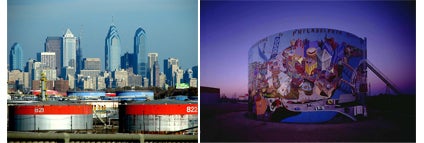
Amenities are a must
Berlin and the German Federal Train system are able to decorate the Airport Express cars because they are dedicated to the Schoenefeld Airport line. Having exclusive Airport train cars allows for other amenities as well. The R1 uses a dedicated stock of train cars for its Airport lines as well.
A major concern for air passengers and a contributing reason the automobile is such a popular means of transportation is people’s desire to tote their luggage as little as possible. Cars on airport lines should have adequate luggage space for folks with large or multiple bags. Overhead racks may not be optimal for grandparents traveling with clothing for two weeks of vacation. SEPTA has removed the first and last seats in their airport cars to make space for passenger luggage.
Why take your bags at all though? For a small fee, airports in Geneva, Zurich, and Hong Kong allow off-site baggage check in up to 24 hours in advance from major train stations. And with the growing popularity of online check-in for passengers taking only carry-on luggage, universal or complete-trip check in at train stations, or even on trains is becoming standard in automated terminals in some Asian and European countries. Air France and British Airways both offer package tickets including taxi, rail, and air fare. Now that’s convenience that can compete with driving or bugging a friend for a ride.
Connectivity counts
Of course, ultimately it all comes down to getting people where they want to go in a comparable amount of time and at a competitive price. SEPTA’s connections to the regional rail network are excellent and well traveled. No one needs precedents to say that a faster and more frequent line is more attractive to travelers. That twenty minute wait for the next train steers many folks to the fifteen minute cab ride, especially after long flights.
Flemming says the R1’s saving grace is in its value. Unlike some airport lines, the R1 is unique in that it costs the same price as all other rides on the system, approximately $5 to Center City. The London-Heathrow Express Line can cost as much $40 one-way…
Connections beyond the region could also play a critical role in bolstering PHL as an international gateway. Flemming notes that while the R1 line “works well for what it is” it may be “too Center City focused” to act as the only transit connection to the region’s international gateway.
The R1 signage at 30th Street Station for the R1 Airport Line is virtually non existent. Ideally, PHL would be in play along the North East Corridor, say both Flemming and Actman. This would provide a one-seat connection from multiple destinations in the region to the terminals at PHL. Such a connection could also link to any future high speed rail lines that may be established in years to come.
Such a connection could place PHL in a more competitive position in the region. With five major airports within two hours of Philadelphia International: LaGuardia, JFK, Newark, BWI, and Reagan, the establishment of a convenient rail connection from the region to PHL could give Philly a competitive edge when competing for air travel customers.
PHL as a barrier free international Gateway to the region could also provide not only additional tourism and economic activity but would create more business for the airport. If current EIS planning that focuses on reducing delays and increasing capacity were combined with an active campaign to increase PHL’s presence as a gateway for the region through improved and expanded transit connections, the airport its passengers and the region could reap significant benefits.
Arrus Farmer was most recently a Robert Bosch Fellow based in Berlin, Germany working in the planning and administration of large scale public-private developments. He holds both a Masters of City Planning and a Masters of Government Administration from the University of Pennsylvania which were completed earlier this year. Farmer has worked with Praxis on a number of civic engagement projects including the Civic Vision for the Central Delaware Riverfront.
Contact the reporter at arrus.farmer@alumni.upenn.edu
WHYY is your source for fact-based, in-depth journalism and information. As a nonprofit organization, we rely on financial support from readers like you. Please give today.



